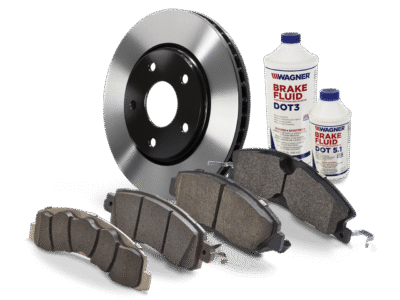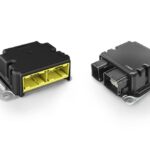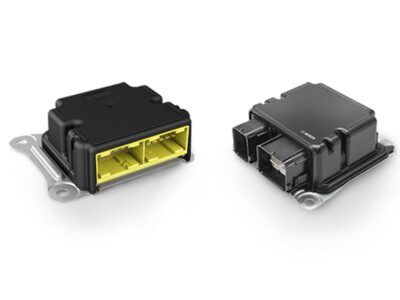
Troubleshooting Fiat Tipo Suspension Failures

The Fiat Tipo is a popular model known for its comfort and handling, but like any vehicle, it can experience suspension failures over time. Suspension issues can lead to a rough ride, uneven tire wear, and compromised safety. Troubleshooting suspension failures in the Fiat Tipo requires a thorough understanding of its suspension system and the common problems that can arise. By identifying the root cause of the issue, owners can take corrective action to restore their vehicle's performance and ensure a smooth driving experience. Regular maintenance is key to preventing such failures.
Diagnosing and Fixing Common Suspension Issues in Fiat Tipo
The Fiat Tipo is known for its comfortable ride and responsive handling, but like any vehicle, its suspension system can be prone to issues over time. Troubleshooting suspension failures is crucial to maintaining the car's performance and safety.
Identifying Symptoms of Suspension Failure
When the suspension system starts to fail, it can manifest in various ways, including a bumpy ride, uneven tire wear, and clunking or knocking noises when driving over bumps. It's essential to identify these symptoms early on to prevent further damage to the suspension and other components. A thorough inspection of the suspension system can help determine the root cause of the issue, whether it's worn-out shock absorbers, damaged control arms, or loose mounts.
Common Causes of Suspension Failure
Several factors can contribute to suspension failure in the Fiat Tipo, including wear and tear, road conditions, and driving habits. For instance, driving on rough roads or potholes can cause excessive stress on the suspension components, leading to premature wear. Additionally, neglecting regular maintenance, such as failing to replace worn-out ball joints or tie rods, can also contribute to suspension failure.
Repairing and Replacing Suspension Components
To fix suspension issues, it's often necessary to replace damaged or worn-out components. The following table outlines some common suspension components, their typical failure symptoms, and recommended replacement intervals:
| Component | Failure Symptoms | Replacement Interval |
|---|---|---|
| Shock Absorbers | Bumpy ride, excessive body roll | 50,000 - 70,000 miles |
| Control Arms | Clunking or knocking noises, uneven tire wear | 70,000 - 100,000 miles |
| Ball Joints | Clunking or creaking noises, loose steering | 50,000 - 80,000 miles |
Do Fiat 500 have suspension problems?
The Fiat 500 is a popular city car known for its stylish design and compact size. However, like any other vehicle, it is not immune to suspension problems. Some owners have reported issues with the suspension system, which can be caused by a variety of factors, including wear and tear, poor road conditions, and inadequate maintenance.
Suspension Issues in Fiat 500
The Fiat 500's suspension system is designed to provide a comfortable ride and stable handling. However, some owners have reported issues with the suspension, including a bouncy or unstable ride, clunking or rattling noises, and uneven tire wear. These problems can be caused by worn-out or damaged suspension components, such as shock absorbers, struts, or bushings.
- Worn-out shock absorbers or struts can cause a bouncy or unstable ride.
- Damaged or worn-out bushings can cause clunking or rattling noises.
- Uneven tire wear can be caused by misaligned suspension components.
Common Causes of Suspension Problems
Suspension problems in the Fiat 500 can be caused by a variety of factors, including driving habits, road conditions, and maintenance habits. For example, driving on rough roads or potholes can cause damage to the suspension components, while failing to maintain the vehicle regularly can lead to worn-out or damaged parts.
You may be interested in reading Resolving Electrical Problems in the Fiat Tipo
Resolving Electrical Problems in the Fiat Tipo- Driving on rough roads or potholes can cause damage to suspension components.
- Failing to maintain the vehicle regularly can lead to worn-out or damaged parts.
- Overloading the vehicle can put excessive stress on the suspension system.
Repairing Suspension Problems
Repairing suspension problems in the Fiat 500 typically involves replacing worn-out or damaged components, such as shock absorbers, struts, or bushings. In some cases, the suspension system may need to be realigned to ensure proper alignment and prevent further damage.
- Replacing worn-out or damaged shock absorbers or struts can improve ride quality.
- Replacing damaged or worn-out bushings can eliminate clunking or rattling noises.
- Realignment of the suspension system can prevent uneven tire wear.
How many miles does a Fiat Tipo last?

The Fiat Tipo is a compact car produced by the Italian manufacturer Fiat since 2015. The lifespan of a Fiat Tipo in terms of mileage depends on various factors, including maintenance quality, driving conditions, and the model year. Generally, a well-maintained Fiat Tipo can last for a considerable number of miles.
Reliability and Maintenance
The reliability of the Fiat Tipo plays a significant role in determining its longevity. Regular maintenance is crucial to extend the life of the vehicle. Factors such as oil change intervals, brake pad replacements, and timely addressing of any issues that arise during routine checks can significantly impact how long the car lasts.
- Regular oil changes help in maintaining the engine's health.
- Replacing worn-out parts, such as brake pads and tires, on time prevents further damage.
- Addressing any fault codes or unusual noises promptly can prevent minor issues from becoming major problems.
Driving Conditions and Habits
Driving conditions and habits also affect the lifespan of a Fiat Tipo. Driving in harsh weather conditions, such as extreme temperatures, or in areas with poor road conditions can reduce the car's lifespan. Aggressive driving habits, such as rapid acceleration and braking, can also negatively impact the vehicle's longevity.
- Driving in moderate weather conditions can help in reducing wear and tear.
- Avoiding extreme driving habits, like rapid acceleration, can help in prolonging the life of the engine and transmission.
- Regularly checking and maintaining the correct tire pressure can improve fuel efficiency and reduce tire wear.
Model Year and Specifications
The model year and specifications of the Fiat Tipo can also influence its durability. Different model years may have different engine options, transmission types, and technological advancements that can affect how long the car lasts. Understanding the specifications and any known issues with specific models can help in making informed decisions about maintenance and repairs.
- Researching the model year and known issues can help in anticipating potential problems.
- Understanding the engine and transmission type can provide insights into maintenance needs.
- Checking for any recalls or technical service bulletins related to the specific model can help in addressing potential issues early.
Is the Fiat Tipo discontinued?

The Fiat Tipo was a car model produced by the Italian automobile manufacturer Fiat. The original Tipo was first introduced in 1988 and was in production until 1995. However, the nameplate was revived in 2015 with the introduction of the Fiat Tipo (2016), also known as the Fiat Egea in Turkey, where it was first manufactured. As of my last update, the status of the Fiat Tipo's production can vary depending on the market and region.
Fiat Tipo Production Status
The production status of the Fiat Tipo has seen changes over the years. Initially, when it was reintroduced, it was available in various body styles, including sedan, hatchback, and station wagon. The availability of these models has changed over time, with some markets having access to a wider range of body styles than others.
You may be interested in reading Resolving Electrical Problems in the Fiat Tipo
Resolving Electrical Problems in the Fiat Tipo Fixing Door Lock Failures in Your Fiat Tipo
Fixing Door Lock Failures in Your Fiat Tipo- The sedan version was widely available in several markets, including Turkey and Europe.
- The hatchback model was also popular in certain regions.
- The station wagon, known for its spacious interior, was another variant that was produced.
Regional Availability and Discontinuation
The Fiat Tipo's availability and discontinuation vary by region. In some markets, the model has been phased out or its availability significantly reduced due to various factors, including market demand and regulatory requirements.
- In certain European markets, the Tipo was available until recent model years.
- In other regions, the model was discontinued due to low demand or the introduction of newer models.
- The model's popularity in Turkey, where it was manufactured, has been a significant factor in its continued production for certain markets.
Market Trends and Alternatives
The compact car segment, where the Fiat Tipo competes, is highly competitive, with numerous models available from various manufacturers. Trends in consumer preferences, including the shift towards SUVs and electric vehicles, have impacted the sales and availability of models like the Fiat Tipo.
- Consumers are increasingly opting for crossover SUVs over traditional sedans and hatchbacks.
- The rise of electric vehicles has also led manufacturers to focus on electrifying their lineups.
- Despite these trends, some consumers continue to prefer compact cars for their practicality and affordability.
Who makes Fiat Tipo engines?

The Fiat Tipo engines are manufactured by various suppliers depending on the specific engine type and the market. Fiat Chrysler Automobiles (FCA), now known as Stellantis, has partnerships with several engine manufacturers to supply engines for the Fiat Tipo.
Fiat Tipo Engine Suppliers
The Fiat Tipo has been equipped with a range of engines over the years, sourced from different suppliers. Some of the notable engine suppliers for the Fiat Tipo include:
- FCA's own engine manufacturing facilities, such as the one in Termoli, Italy, which produces a range of petrol and diesel engines.
- Multijet diesel engines are produced by FCA's engine plants, and are known for their efficiency and performance.
- Some petrol engines used in the Fiat Tipo are sourced from suppliers such as Firefly, which is a family of turbocharged petrol engines developed by FCA.
Engine Manufacturing Process
The manufacturing process for Fiat Tipo engines involves several stages, from design and testing to production and quality control. The engine manufacturing process typically involves:
- Casting and machining of engine components, such as cylinder heads and blocks.
- Assembly of engine components, including the crankshaft, camshaft, and valves.
- Testing and validation of the engines to ensure they meet performance and emissions standards.
Engine Variants and Specifications
The Fiat Tipo has been available with a range of engine variants over the years, including petrol and diesel options. Some of the engine variants used in the Fiat Tipo include:
- 1.4 litre and 1.6 litre petrol engines, available with manual and automatic transmissions.
- 1.3 litre and 1.6 litre Multijet diesel engines, known for their fuel efficiency and performance.
- Turbocharged petrol engines, such as the Firefly engine, which offer improved performance and efficiency.
Frequently Asked Questions
What are the common signs of Fiat Tipo suspension failure?
The common signs of Fiat Tipo suspension failure include uneven tire wear, vibrations while driving, and a bumpy ride. You may also notice the car pulling to one side or the other while driving, or a clunking noise when driving over bumps. If you notice any of these symptoms, it's essential to have your suspension inspected by a mechanic to prevent further damage.
How do I diagnose a faulty Fiat Tipo suspension?
To diagnose a faulty Fiat Tipo suspension, inspect the shock absorbers, struts, and springs for signs of wear or damage. Check the vehicle's ride height and look for uneven tire wear. You can also perform a bounce test to check the shock absorbers' effectiveness. If you're still unsure, consult a mechanic who can perform a more thorough inspection and recommend repairs.
You may be interested in reading Resolving Electrical Problems in the Fiat Tipo
Resolving Electrical Problems in the Fiat Tipo Fixing Door Lock Failures in Your Fiat Tipo
Fixing Door Lock Failures in Your Fiat Tipo Addressing Fiat Tipo Airbag Module Software Issues
Addressing Fiat Tipo Airbag Module Software IssuesCan I repair my Fiat Tipo suspension myself?
While some suspension repairs can be done DIY, it's not recommended unless you have experience working with suspension systems. Replacing shock absorbers or struts requires specialized tools and knowledge. If you're not confident in your abilities, it's best to consult a professional mechanic to ensure the repairs are done correctly and safely.
How much does it cost to repair a Fiat Tipo suspension?
The cost to repair a Fiat Tipo suspension varies depending on the extent of the damage and the type of repairs needed. Replacing a single shock absorber can cost between $200-$500, while replacing the entire suspension system can cost upwards of $1,500-$2,500. It's best to get a quote from a mechanic to determine the exact cost of the repairs.

If you want to know other articles similar to Troubleshooting Fiat Tipo Suspension Failures you can visit the category Fiat Tipo.
Deja una respuesta







More content of your interest